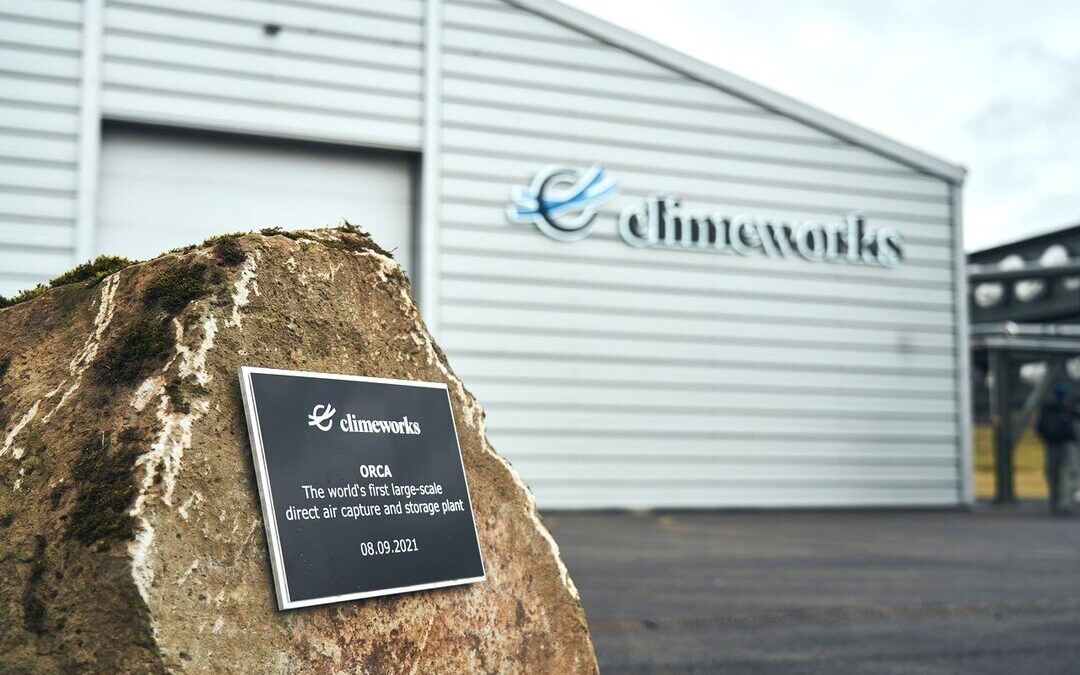
The carbon removal market just shifted from nice-to-have to must-have infrastructure. SAP's decision to integrate 37,000 tonnes of carbon removals directly into its enterprise resource planning systems through 2034 signals that removals are becoming operational requirements, not optional sustainability purchases.
Enterprise Integration Changes Everything
The deal with Climeworks goes beyond traditional carbon credit purchases. SAP is embedding removal management into its SAP Sustainability Control Tower, making carbon drawdown as routine as tracking inventory or managing payroll for its enterprise customers.
This integration allows organizations using SAP's systems to monitor emissions and deploy removal solutions in real time. The move transforms carbon removals from standalone sustainability initiatives into core business infrastructure.
Key Deal Components
- Volume: 37,000 tonnes of carbon removals through 2034
- Technologies: Direct air capture, biochar, enhanced weathering
- Integration: Built into SAP ERP and cloud systems
- Scope: Multi-million euro commitment with price hedging

>> RELATED: SAP and Climeworks Forge an Alliance for Carbon Drawdown
Fortune 500 Rush Creates Market Foundation
SAP joins a growing list of tech giants locking in long-term removal capacity. Microsoft recently signed an 18 million tonne deal with Rubicon Carbon over 15-20 years, while Frontier, backed by Alphabet, Meta, McKinsey, Shopify and Stripe, has secured over $1 billion in funding for carbon removal projects.
These enterprise commitments are fundamentally different from early voluntary purchases. Companies are now securing decade-long contracts to hedge against future carbon pricing and regulatory requirements.

"Investing in quality carbon removals addresses emissions we can't eliminate directly. Our Climeworks partnership secures high-integrity capacity at preferred rates while protecting against price volatility."
Sophia Mendelsohn, Chief Sustainability & Commercial Officer at SAP
Technology Diversification Strategy
Climeworks is offering SAP a portfolio approach rather than betting on single technologies. The removal mix includes:
- Direct air capture: Proven but expensive technology for permanent storage
- Biochar: Lower-cost option with co-benefits for agriculture
- Enhanced weathering: Scalable mineral-based approach
This diversification reflects industry maturation. Early buyers focused on single technologies; today's enterprise customers want risk-managed portfolios that balance cost, permanence, and scalability.

>> In Other News: BASF and Yara End Joint Project for Low-carbon Ammonia at U.S. Gulf Coast
Market Implications
SAP's integration model could accelerate removal adoption across its customer base of 440,000+ companies. When carbon management becomes as simple as running standard business reports, adoption barriers collapse.
The timing aligns with tightening European regulations. Companies need verifiable removal strategies, not just reduction plans, to meet net-zero commitments under frameworks like the EU Corporate Sustainability Reporting Directive.

"As SAP advances its decarbonisation strategy, the biggest opportunities for positive impact lie in leveraging our technology and ecosystem to drive systemic change, both internally and across industries."
Matthias Medert, Global Head of Sustainability at SAP
Financial Risk Management
Long-term contracts provide price certainty in a volatile CDR market. Early removal credits traded at $100-600 per tonne, but prices vary wildly based on technology and verification standards.
By securing capacity now, SAP locks in rates before potential supply constraints drive prices higher. The company also spreads financial risk across multiple technologies rather than betting on single solutions.
Infrastructure Play Accelerates Adoption
The real innovation isn't the carbon purchase, it's the systems integration. SAP is making removals as operationally routine as managing accounts payable.
This infrastructure approach could trigger network effects across SAP's enterprise ecosystem. As removal management becomes standard functionality, other companies using SAP systems gain easier access to verified removal options.
The move positions carbon removals as essential business infrastructure rather than optional sustainability add-ons, potentially accelerating the market's evolution from niche to necessity.
Subscribe to the newsletter
Daily decarbonization data and news delivered to your inbox
Follow the money flow of climate, technology, and energy investments to uncover new opportunities and jobs.
Latest issues
-
The Three-Continent Move That Redefines SAF
Wishing everyone a restful holiday season.🎄🎅🎁 Inside this Issue ✈️ Cathay Goes Global With SAF in Three-Continent Fuel Deal 🧪 Proton Ventures Partners With Barents Blue For Realization Of The Bar...
-
Can One Truck Fix Hydrogen’s Biggest Problem?
Inside This Issue 🚛 Alberta's Shared Truck Model Could Crack Hydrogen Adoption ✈️ ZeroAvia Completes Financing Round 🌾 Frontier And NULIFE Scale New Biowaste Carbon Removal Approach 🔥 WAGABOX® Of ...
-
North America’s Carbon Removal Year in Review: Winners, Losers, Surprises
Inside This Issue 🌎 North America's Carbon Removal Year in Review: The Deals, Policies, and Milestones That Shaped 2025 🚢 Hapag-Lloyd And North Sea Container Line Win ZEMBA Second E-Fuel Tender 🪨 ...
Company Announcements
-
ClimeFi Announces New 85,000 Tonne Procurement Round
In its latest procurement round, ClimeFi has enabled more than US$18m in durable carbon removal purchases across eight removal pathways: Biochar, Bioenergy with Carbon Capture and Storage (BECCS), ...
-
Vallourec, a world leader in premium seamless tubular solutions, and Geostock, a global specialist in underground storage of energy, have signed a Memorandum of Understanding (MoU) to strengthen th...
-
CMA CGM, DHL Step Up Ocean Freight Decarbonization with Biofuel Deal
DHL Global Forwarding and shipping group CMA CGM have agreed to jointly use 8,990 metric tons of second-generation biofuel to reduce emissions from ocean freight. The initiative is expected to cut...
-
Next-Generation Gas Turbine Control System For Thermal Power Plants Completes Functional Testing
Integration of Mitsubishi Power's control technology with Mitsubishi Electric's high-speed data processing technology Supports rapid load adjustments and diverse fuels including hydrogen Tokyo, ...